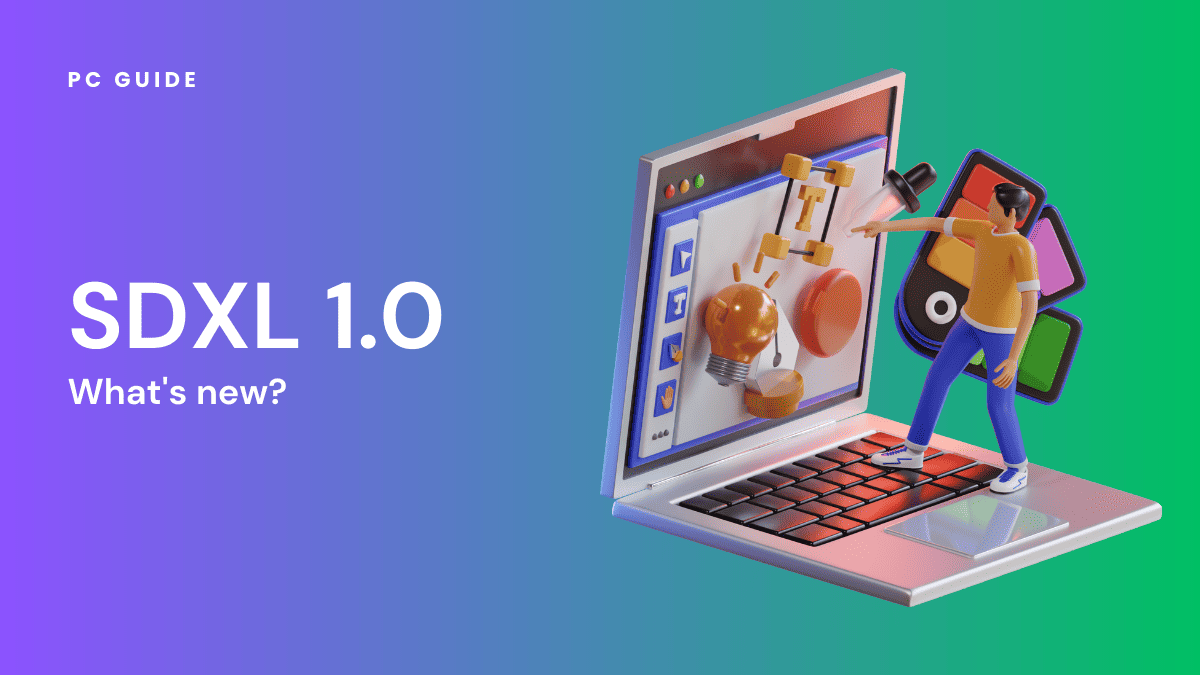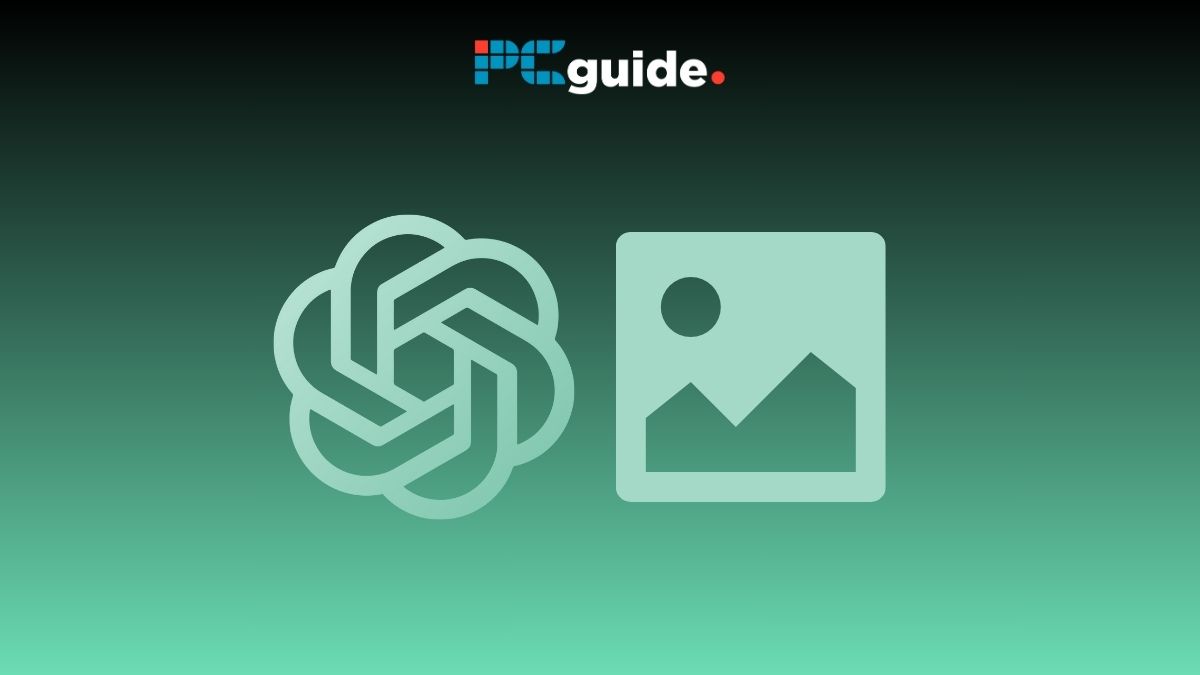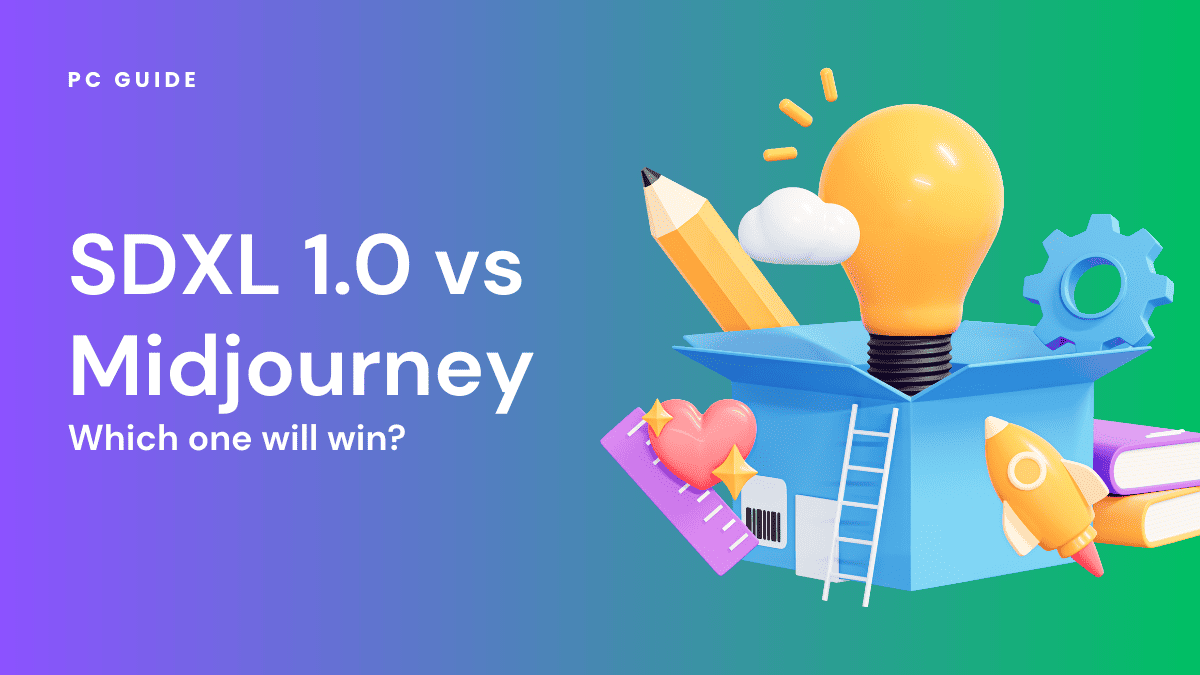Unveiling SDXL 1.0 – What’s new?

Table of Contents
On July 26, 2023, Stability AI unveiled SDXL 1.0, marking a significant milestone in the realm of AI image generation. As the successor to SDXL 0.9, SDXL 1.0 has been meticulously designed to offer superior image quality and control, setting a new standard in the field. This article delves into the key enhancements that SDXL 1.0 brings to the table, compared to its predecessor.
SDXL 1.0, or Stable Diffusion XL, is a testament to Stability AI’s commitment to pushing the boundaries of what’s possible in AI image generation. With its ability to produce images with accurate colors and intricate shadows, SDXL 1.0 is designed to bring your text prompts to life in the most vivid and realistic way possible.
Prime Day is finally here! Find all the biggest tech and PC deals below.
- Sapphire 11348-03-20G Pulse AMD Radeon™ RX 9070 XT Was $779 Now $739
- AMD Ryzen 7 7800X3D 8-Core, 16-Thread Desktop Processor Was $449 Now $341
- ASUS RTX™ 5060 OC Edition Graphics Card Was $379 Now $339
- LG 77-Inch Class OLED evo AI 4K C5 Series Smart TV Was $3,696 Now $2,796
- Intel® Core™ i7-14700K New Gaming Desktop Was $320.99 Now $274
- Lexar 2TB NM1090 w/HeatSink SSD PCIe Gen5x4 NVMe M.2 Was $281.97 Now $214.98
- Apple Watch Series 10 GPS + Cellular 42mm case Smartwatch Was $499.99 Now $379.99
- ASUS ROG Strix G16 (2025) 16" FHD, RTX 5060 gaming laptop Was $1,499.99 Now $1,274.99
- Apple iPad mini (A17 Pro): Apple Intelligence Was $499.99 Now $379.99
*Prices and savings subject to change. Click through to get the current prices.
One of the most notable improvements in SDXL 1.0 is its enhanced control over the image generation process. This feature empowers users to fine-tune the output, allowing for a higher degree of customization. Whether you’re looking to generate a simple ClipDrop or a complex piece of artwork, SDXL 1.0 gives you the tools you need to create exactly what you envision.
Another significant upgrade in SDXL 1.0 is its base model. The base model serves as the foundation for the image generation process, determining the overall quality and accuracy of the generated images. In SDXL 1.0, the base model has been optimized to produce even better results, making it a powerful tool for any creator.
SDXL 1.0 and ChatGPT: A Powerful Combination
In addition to its standalone capabilities, SDXL 1.0 can also be used with other artificial intelligence tools like ChatGPT. This combination allows users to leverage the power of both models, using ChatGPT to generate text prompts and SDXL 1.0 to turn those prompts into stunning images. This synergy between text and image generation models is a testament to the advancements in artificial intelligence and the potential for these tools to revolutionize creative processes.
Unveiling SDXL 1.0
Fine-Tuning SDXL 1.0: A New Era of Customization
One of the most exciting features of SDXL 1.0 is the ability to fine-tune the model. This feature, which was in beta preview during the release, allows users to specialize in generating specific individuals or objects using as few as five photographs. This fine-tuning capability opens up a new world of possibilities for creators, allowing them to generate images that are tailored to their specific needs and preferences.
Custom LoRAs for Personalized Creations
With SDXL 1.0, Stability AI introduces the concept of custom LoRAs (Latent Optimized Random Access). This feature allows users to generate custom checkpoints with fewer data wrangling, providing a more streamlined experience. Whether you’re a professional artist seeking to infuse your work with a unique art style or a hobbyist experimenting with different graphics, custom LoRAs offer a new level of creative freedom.
Higher Quality Images
One of the most striking improvements in SDXL 1.0 is the production of higher-quality, more detailed images. Leveraging advancements such as adversarial training and 2D diffusion models, SDXL 1.0 is capable of generating distinct images in crisp 4K resolution. Whether it’s portraits, landscapes, or architectural designs, SDXL 1.0 renders them with an unprecedented level of precision and clarity, offering better contrast and accurate colors.
Enhanced Text-to-Image Mapping
Another significant enhancement in SDXL 1.0 is the strengthened text-to-image mapping. The model now exhibits a more refined ability to interpret contextual cues from the text prompt and map them to relevant visual details in the generated image. This improvement means that prompts are followed more closely, with better reasoning to translate text into visually aligned features, providing creators with absolute freedom of style.
Wider Range of Possibilities
Thanks to adversarial training on a larger dataset, SDXL 1.0 can generate a more diverse array of high-quality images. This upgrade empowers users to explore bolder, more diverse creative possibilities, making it the best open model for such tasks.
More User Control
User control is another area where SDXL 1.0 shines. The model provides enhanced control over parameters like image resolution, sampling steps, and more. Users can extensively fine-tune aspects of the generation process to get the perfect outputs. Combined with scripting APIs, this enables bespoke customization for advanced use cases.
Steeper System Requirements
Of course, these improved capabilities come with steeper system requirements. To support high-res 4K image generation, SDXL 1.0 requires GPUs with at least 12 GB of VRAM and a Windows machine. For many users, this hardware investment will be well worth the access to SDXL’s cutting-edge upgrades.
The Power of Two-Stage Architecture
One of the most significant advancements in SDXL 1.0 is the implementation of a two-stage architecture. This innovative design consists of a base model and a refinement model, which work together to produce images of unparalleled quality.
The base model sets the stage, creating a rough sketch of the image, while the refinement model adds the final denoising steps, enhancing the details and polishing the image to perfection. This two-stage architecture balances robustness and speed, making SDXL 1.0 a standout in the realm of artificial intelligence tools.
Custom Data Fine-Tuning
SDXL 1.0 also introduces the ability for fine-tuning with custom data. This means that users can train the model on their datasets, allowing for more personalized and specific image generation. Whether you’re looking to generate images in a specific art style or want to create images that align with a particular theme, the fine-tuning capabilities of SDXL 1.0 make it possible.
Next Generation of Task-Specific Structure
With SDXL 1.0, Stability AI is building the next generation of task-specific structure. This means that the model is designed to handle specific tasks more efficiently, such as generating images from text prompts. This task-specific structure allows for more accurate and detailed image generation, pushing the boundaries of what’s possible with AI image generation.
ControlNet and Composition Controls
SDXL 1.0 introduces ControlNet and advanced composition controls. ControlNet is a feature that allows users to have more control over the image generation process. With composition controls, users can dictate the layout and structure of the generated images, allowing for more creative freedom and flexibility.
DreamStudio Integration
SDXL 1.0 is not just for developers and researchers. With its integration into consumer applications like DreamStudio, everyday users can also harness the power of SDXL 1.0.
Whether you’re a digital artist looking to generate unique compositions or a hobbyist interested in exploring the capabilities of AI, SDXL 1.0 offers a user-friendly and accessible way to dive into the world of AI image generation.
AWS SageMaker Support
Finally, SDXL 1.0 is available on AWS SageMaker, a cloud machine-learning platform. This means that users can leverage the power of AWS’s cloud computing infrastructure to run SDXL 1.0, making it accessible to a wider range of users.
SDXL 1.0 represents a significant leap forward in the field of AI image generation. With its ability to produce high-quality images, enhanced text-to-image mapping, a wider range of possibilities, and more user control, it’s a powerful tool for any creator.
SDXL 1.0 and AWS: A Fully Managed Service
In June 2023, Stability AI announced that SDXL 1.0 would be available on Amazon Bedrock, a fully managed service from Amazon Web Services (AWS). This announcement, made by Swami Sivasubramanian, the Vice President of Database, Analytics, and Machine Learning at AWS, marked a significant milestone for SDXL 1.0.
With its availability on AWS, users can access and use SDXL 1.0 in a secure, scalable, and fully managed environment, further expanding its accessibility and potential applications.
Stable Doodle: A New Addition to the SDXL Family
In addition to the release of SDXL 1.0, Stability AI has also launched Stable Doodle. This new feature enables sketch-to-image generation, allowing users to turn simple sketches into detailed, high-quality images. With Stable Doodle, the foreground of your creativity is only limited by your imagination.
A Simple Language for Complex Creations
One of the key improvements in SDXL 1.0 is its ability to understand and interpret simple language to generate complex images. This feature, coupled with the model’s WebUI, makes it easier for users to generate images.
All they need to do is enter a text prompt, and SDXL 1.0 will generate an image based on that prompt. This simple language capability makes SDXL 1.0 not only a powerful tool for image generation but also an intuitive and user-friendly one.
Midjourney vs. SDXL 1.0: A Comparison in Terms of Quality
While Midjourney has been a popular choice among AI image generation tools, the open-source nature of SDXL 1.0 gives it an edge. In terms of quality, SDXL 1.0 is the only commercially available image model that matches Midjourney’s output. However, SDXL 1.0 goes a step further by offering more features and potential due to its open-source nature, making it a powerful tool for creators.
Conclusion
SDXL 1.0 – What’s New? is a game-changer in AI image generation. With enhanced photorealism, aspect ratio handling, and AWS Bedrock support, it empowers creators with limitless possibilities. Improved consumer GPU support democratizes access to advanced AI tools, while latent diffusion and custom checkpoints offer unique and high-quality image generation. Integration with Amazon Sagemaker Jumpstart streamlines machine learning for a seamless experience.
Get ready to explore the future of AI with SDXL 1.0!


